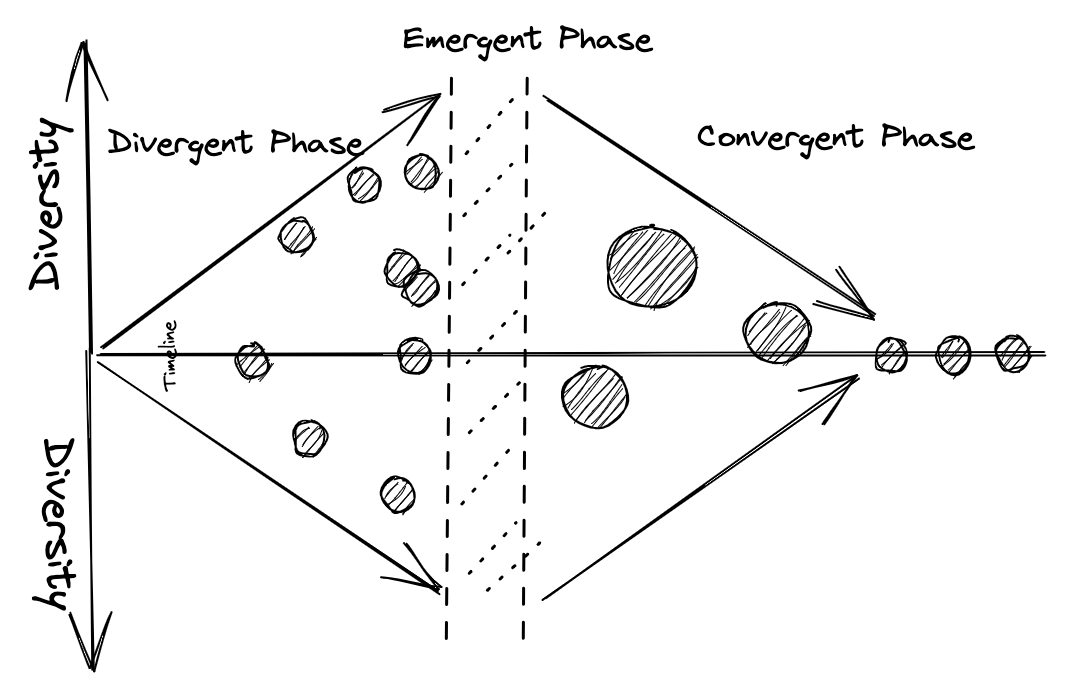
Two years ago a lot of companies switched to working from home, some decided to stay remote first. Working remotely will stay with us and, as a result, we need to learn how to tackle issues generated by this workstyle. Humans are not thinking machines that feel, on the contrary, they are feeling machines that think. This may be forgotten when we work remotely surrounded by four walls. People working from home lack the opportunity to have water cooler chats at the office. This changes the dynamics of building relationships. Every voice holds valuable information and it's hard to make sure that every voice is heard in a distributed environment. That's why we need to create another set of tools when working remotely to communicate efficiently. It's a key to removing frustrations and growing your team in a more sustainable way.
For me, switching from office based to remote, isn't about switching the place where we work. It's important to build up new skills not only as an individual, but also as an organization. According to Inc. Gen Z is hailed as the most creative and individualistic generation. As a result companies must adapt and learn how to build the right remote workspace. An organization is a group of independent teams working together to reach a common goal. Each team is connected to one another. In order to succeed companies must create great workplaces that generate high-performing teams. A "high-performance work team" refers to a group of goal-focused individuals with specialized expertise and complementary skills who collaborate, innovate and produce superior results consistently. Easy to say, not so easy to do. The first step is to make teams self-aware of what they are missing to become high performing. It might be silly, but not designing tools to allow teams to reflect, may be a cultural trap for your organization. The team needs to know if they lack expertise, other teams’ support, or have a challenge outside the organization, tools, or other commodities.
In traditional command and control organizations, a common approach to address issues is to focus on individuals, not the underlying system’s dynamics. Modern companies are more of a web of connections between teams, departments and functions. Constellation of these teams plays a natural and constant game of interests between these entities of a company. If you understand this, self-awareness as well as relationships with others, start to play an important role. Teams are living organisms with their own needs. They use other teams' resources and collaborate with them for a greater good. A key driver to high-performing teams is understanding their members, their common needs and their dependencies on other teams or environmental constraints. Making a team aware of their dependencies, challenges and shortcomings allows them to react and improve. They can start to consciously reflect on what they control and what they do not, as well as ask for help needed by others. They take ownership of their team's growth by growing team members in the direction of their goals and on things they want to achieve.
Start by defining what the ideal place a team wants to be in in the future is. I do this by defining the characteristics of the best team ever with team members. Every team is different, by acknowledging that, you allow the team to build their soul. That usually generates purpose, a common goal for a team, if it wasn't defined before. If it was, it allows reflection if a common goal is still valid or requires work.
The second step is to define things that prevent you from being there. I use design thinking techniques to talk about things that bother people. Designing thinking workshops have three stages: the divergent phase, the emergent phase and the convergent phase. This is a brilliant technique that allows you to make sure that we hear everybody and decide what matters for a team, making the discussion focused.
During the divergent phase, allowing everybody to be heard is important. Nobody should be judging other problems, challenges, and dependencies. You should prevent any discussions that turn into criticism. Every voice contains relevant information to consider, even if it sounds as if it should be marginalized. Your job is to ensure safety by expressing even the smallest things that bother team members.

The emergent phase starts with grouping things together. Problems, challenges, environmental issues and dependencies start to emerge. When you are sure that you can demarcate the main themes, you can start discussing them. Use techniques such as five Whys and ask such questions as "How do we want to do it?", "Why do you think so?", "What is important for us?", "What is going to help us?". It drills down into problems and allows you to find the root causes of problems.
The convergent phase finishes with a team understanding of the impact of things that emerged from a team during the workshop. It's a time when people start to see what is important, what is urgent and what generates the biggest impact on a team. You come up with a list of things that are important for a team, things they can work on - a challenges list.
The sky's the limit; as the next step, you can agree on a plan how to tackle the challenges you are facing. Consider what is important and urgent when prioritizing challenges you may tackle as a team. Having a list of challenges creates space for healthy and constructive arguments between team members on their ideas. Remember that you don't need to solve the problem at once and treat them as a task list. Some are too complex, so you might only want to lower their impact or ignore them for the time being (or just accept they are there). Those are the things that people feel they are. By accepting them, you can move forward in creating a high performing team. Isn't it the environment people want to live in?